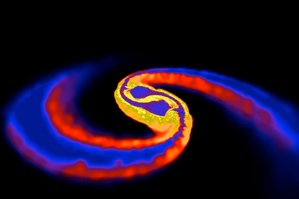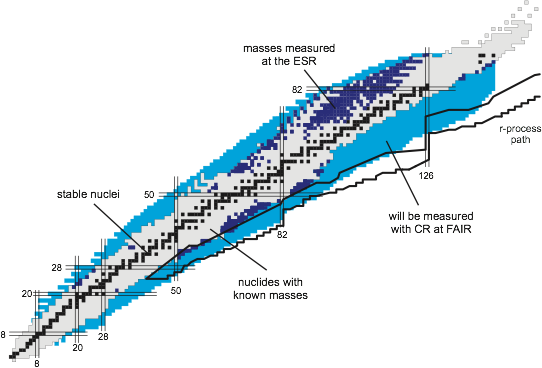The origin of heavy elements like gold, uranium or platinum in the Universe is one of the most interdisciplinary and exciting questions of science today. The nuclear process producing the heaviest elements is the r-process and consists of rapid neutron captures followed by beta decays. The astrophysical site for the r-process remains unknown, however the extreme conditions
required reduces the possibilities to core-collapse supernovae, neutron-star mergers, accretion disks, gamma-ray bursts, and jet-like supernovae.
The r-process path involves nuclei far from stability for which no experimental data are available and theoretical extrapolations are very uncertain. Some of these extreme neutron-rich nuclei will be produced at GSI and their properties will be measured in the Fragment Separator (FRS), Experimental Storage Ring (ESR) and the LAND setup for experiments with secondary beams. Moreover, the future NuSTAR experimental setups at FAIR (e.g., R3B, SuperFRS, and CR) will explore nuclei even farther from stability. Because these are highly challenging experiments, with the rarest isotopes that can be produced in the laboratory, it is critical to identify the most relevant nuclei for the production of heavy elements. This requires combining the nuclear physics of nucleosynthesis with advanced simulations of the astrophysical environments that are thought to provide the hosts for new
elements.
Our HYIG works along two lines to understand the origin of heavy elements: astrophysics simulations of supernova explosions that probe nuclear matter at the extremes combined with nucleosynthesis calculations, which involve the most neutron-rich nuclei. The nuclear physics input and the evolution
of the astrophysical environment are the most important ingredients of the nucleosynthesis calculations. The impact of the nuclear physics input is studied in our group in close collaboration with theory and experimental groups at GSI, TU Darmstadt, and other international institutions.





